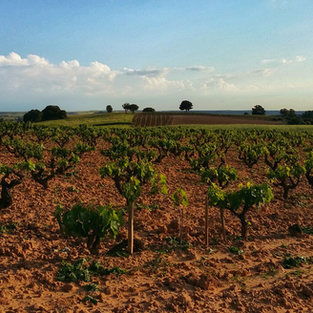Who is at the top?
- Iván González Gaínza

- Dec 5, 2020
- 4 min read
Updated: Sep 12, 2023
'Which is the best wine region in Spain?'
I have been asked this question on numerous occasions, and in all honesty, I do not have a straight answer.
If you are wise enough to come up with an answer that will satisfy everyone in the room, congratulations! In all my years working in this industry I have never seen this happen. The debate is always contested based on historical notes, wine names and other factual (or otherwise) information. These are typical examples:
Rioja is the best red wine...
Sherry is the oldest...
Galicia produces the best whites....
Ribera del Duero has the largest quantity...
The best wine in the world is from...
These debates are endless!
When choosing a wine for yourself, you will normally base it on your personal taste but you will also be swayed by hierarchy, history and a certain amount of confused information.
There is a wine for every occasion and you should taste as much as possible to broaden your options and understand the range of wines you enjoy. The more you try the more you will know, and the more informed your choices will be. If you stick to one wine region simply because it's what you like to drink and you are comfortable buying wines from this particular area, be my guest, but you are not fully enjoying all that the world of wine has to offer.

And then there is the topic of wine classifications. If you think a D.O. (Denominación de Origen in Spanish) wine is always better quality than a Vino de Mesa (Table Wine) then you are mistaken. When it comes to classifications the lines become blurred.
Political and geographical factors will determine whether a wine belongs to a specific region or D.O. For some producers it is helpful to belong to a particular group and for others it is an absolute headache.
Take for example the Artadi winery choosing to leave the D.O.C. Rioja. Artadi's reputation is so renowned that they do not need to be part of the Rioja classification anymore. Their wines are now classed as Table Wine and yet some of their bottles sell for 400€ a piece.

On the other hand, some wineries from Extremadura chose to join the D.O. Cava and succeeded, after a lengthy legal battle. This region now benefits from the reputation that Catalan Cava has built over the years.
What all of this means to me is that it really doesn't matter what your classification is, with the right 'ingredients' you can always make a top wine.
In Spain, the classifications are somehow a little less complicated than for example, France or areas of Italy. The classifications in Spain are based on a pyramid structure that begins with the less strict demands at the bottom, becoming more complex and more demanding as you move up the pyramid structure.
The higher up a wine is on the pyramid, the more the authorities (either private or public), will control the wines and their quality. As I mentioned previously, winemakers can choose to be on the first step of the pyramid, but if they have their own set of high standards there is absolutely no reason why they can't sell and have their wines accepted in the best restaurants in the world.

These are a list of the classifications you will come across in Spain:
'Producto de España' (The original 'Vino de Mesa') - this is wine that is produced in Spain. There is no need to specify the region, vintage or grape varieties.
'Vino de la Tierra' (Or 'Indicación Geográfica Protegida' / IGP) - this can be wine from a broad region or Comunidad Autónoma such as 'Castilla la Mancha' or 'Madrid'. These are mostly governed by local authorities who have a certain level of control and standards.
'Vinos de Calidad con Indicación Geográfica' - this is a relatively new classification and therefore quite rare. It highlights a specific geographic or human factor that makes wine produced within this classification somehow more special.
'Denominación de Origen' - this is a big one! It is awarded to an area where wines are made with grapes that only come from that specific region. It has a higher prestige and the quality and characteristics of the wine can only be found within the said classification.
'Denominación de Origen Calificada' - you will only find Rioja and Priorat in this category. Their laws and controls are even more strict in terms of how the wineries run, the style of wine that should be produced and how the wines should taste.
'Vino de Pago' - this is given to vineyards that have rare and specific microclimates and conditions that make them unique and stand out from those around them. Only 17 specific vineyards are given this distinction. Watch out for wineries that call themselves 'Pago' as it doesn't necessarily mean they have this classification. For example, there aren't any Ribera del Duero wines in this category.
Spain is a very bureaucratic country and their wine classifications tend to be as well. So much so, that some avantgarde producers create new wine styles or products and then the governing bodies do not accept them, so they are forced to label them as a wine from the bottom of the pyramid.

Another example, Ribera del Duero will only accept the word 'Crianza' on a bottle if the wine has been aged in 225L barrels. If you age red wine in 300L barrels you will be labelled as 'Cosecha' or 'a young wine' no matter how long it has been aged for.
It is understandable that Governing Bodies need to protect a tradition and an identity, but I feel they should also adapt to the new trends and production methods in a more agile manner.
After reading this article, I hope you now have a clearer idea about the classifications within Spain. Next time you organize a dinner party at home why not plan a tasting of wines from the different classifications.
Getting out of your comfort zone is always a fun experience.















Comments